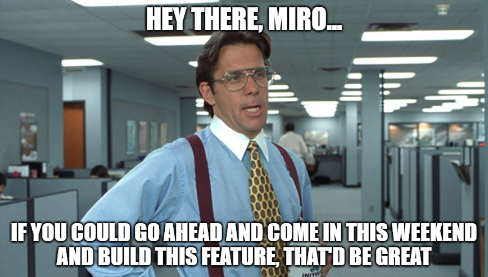I’m working with a team member that wants to control access at the frame level for one of his Miro boards. He has about 26 different groups of people and would prefer not to have to create 26 separate boards when basically the groups are using the same basic template and it would be far cleaner if he could control which frames people could view and edit (i.e. team members and guest editors) and in some cases just view (i.e. management). Having to keep track of 26 boards creates a more complicated situation, sure it can be done but not nearly as convenient if we could control Frame-Level access.
Open
Controlling Access to Content (Frame Level) within a Miro Board?
Enter your E-mail address. We'll send you an e-mail with instructions to reset your password.




